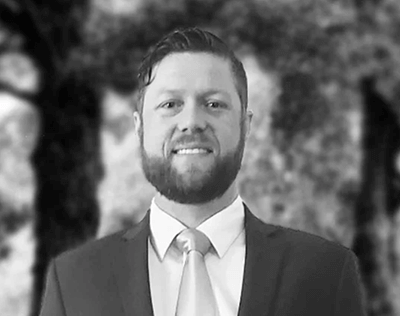Your thermostat has been dropping, and your friends complain about cold temperatures when they visit. No one wants to deal with the discomfort of a broken or malfunctioning furnace. Luckily, there are some DIY troubleshooting tips for checking the heating and cooling system and diagnosing some of the most common furnace problems.
It can be hard to guarantee this step will get the heating unit to work correctly. Still, a local Indoor Air Technologies HVAC contractor may be able to get your system running smoothly. The following sections will show some organized ways to get your furnace working correctly for the most common problems that furnaces face in the San Francisco Bay Area. Get some gloves and some essential household tools, and let’s examine what causes furnace problems for many homeowners.
Table of Contents
Common Problems for a Furnace Not Heating
During the chilly and foggy months of winter in the San Francisco Bay Area, your home requires adequate heating. Especially in the winter months, you depend on the heater to keep you and your family safe and comfortable. With your home heat not working, you get left with a problem that could be dangerous.
Below are some of the most common problems with a furnace not heating.
Gas Furnace Blower Runs Continuously
The blowers are located between the return conduit and furnaces. Cool air can flow by blowers into a heat exchange system and cool in this process before entering your residence. The blower should have a setting that lets you turn it off. Having an open furnace that is not shutting down is a sign of an emergency repair. If it is not shutting down, you may need to diagnose the problem or call an HVAC professional.
Noisy Furnace or Duct Work
It’s not usual for ducts in the walls to squeak or rattle in any way. Vents should get installed securely and never move as air passes through them. If you hear ductwork vibrating or moving, it may need some fixing. The ductwork noise could indicate mechanical problems, air leakage, or blocked fuel pipes.
Some heating units run smoothly, but they are loud. The noise may require further investigation in the furnace unit. The furnace system can produce strange sounds when the pilot lights are incorrectly adjusted, and motor oils are needed. Some belts and burners may have problems.
Furnace Blowing Warm Air Not Hot
A return vent draws air out of your home through air ductwork and sends this air into the furnace to warm the house. Typically, the furnace draws this air into the heat exchanger and turns it hot for the house. However, your system could be inefficient if you notice that the furnace is only blowing warm air and not hot air into your home.
Typical Solutions for Furnace Problems
The problems of your home’s furnace may not be as difficult to diagnose and fix as you think. The heated air from a natural gas furnace is essential for a happy and healthy, comfortable home.
Use the following list of solutions to help you troubleshoot the common furnace problems.
Check Your Circuit Breakers
A faulty breaker on the heating system can cause a furnace problem. Even when a furnace gets powered by a propane or gas burner, the electrical source must get examined early in the year when you use your furnace most.
You must check the circuit breaker that powers the furnace to ensure the heat exchanger gets power. The switches should get manually checked if the controls remain “off.” Suppose your furnace’s power gets turned on and isn’t turning back on. In that case, it may indicate a problem with electrical wiring, which requires a furnace repair professional.
Safety tip: Never turn the circuit breaker on when there is an overload.
The furnace is connected to the power switch, but gas units do not use power. Ensure the fuse/circuit breaker is not broken on the heating panel. Turn the power switch on the furnace on “On.” Verify that the gas valve in the unit opens.
A broken or malfunctioning gas supply in the heating system may cause you to lose fuel. Do you smell gas leaks? If so, shut the gas valve, exit the residence, and call a professional.
Check Your Thermostat
Power to the thermostat is essential, so when you check it, make sure that it has lighting on the panel. If it is an older thermostat, use a multimeter to check for continuity in the wires going out of the back of the thermostat into the wall.
Make sure that the thermostat selector is set to the highest possible temperature. Make sure that your heating gets turned up by adjusting the thermostat to the highest temperature. During a shutdown, the system switches should go into the mode AUTO/HEAT. The fan control should be ON for continuous airflow or ON for automatic blower motor operation.
Make sure it isn’t plugged into the continuous fan setting. Reduce the temperature so that the measures solve this issue. Using an unactivated air furnace blower might indicate a malfunction with the control panel. (they could require replacing).
Check the Pilot Ignition Light
The pilot light on a furnace is where the gas supply comes into the unit and ignites to produce hot air. If the pilot light is not lit, the gas furnace will not be blowing hot air and instead only use the blower motor to push room temperature air into your home.
An LED commonly powers the electrical ignition system in your furnace. When the heat pump starts but won’t activate, your heater could probably have a defective ignition/sensor or another malfunctioning sensor. This common furnace problem can get fixed by replacement. If you start up your HVAC system when the heating season starts and don’t hear any clicks in the unit, it may be time for furnace repairs.
Locating the pilot light ignition switch is not difficult and can be tested for continuity with a multimeter. If the sensor is working, you may have a dirty flame sensor that requires cleaning. Turn off the gas pipe to the heat pumps and repair the furnace yourself by gently wiping the ignition switch. Gently blow off any excess dirt or dust and try the pilot flame again.
Check for Proper Airflow
Your heating systems require ductwork and venting to provide proper ventilation to operate effectively and efficiently. Generally, clogged filters cause less airflow and reduce the heating temperatures at home, which leads to cold air.
The screen mesh of the filter should not remain caked with dirt. Instead, it needs to be changed out every couple of months so that the furnace gets the airflow it needs to produce the desired temperature.
Also, anything near the furnace may obstruct the air flow. The HVAC system needs the vent and air filter to clear obstructions, so ensure no blocked air ducts or other places restrict air flow near the furnace filter.
Sounds in the ducts may also indicate improper air flow in the heating and cooling system. If you can hear that the sound comes from the air passing through the ductwork, you might consider insulating your ductwork to reduce its noise.
Inspect Gas Lines
The gas lines that come into your furnace are less commonly needed for furnace repair. However, the natural gas must enter the unit unobstructed to receive warm air from the heater.
If the heat is not working, it could be a gas line problem. To get the unit blowing hot air again, begin this part of furnace repair by inspecting the gas lines. Check if any lines are pinched and follow the entire gas supply from your central duct to the furnace burners.
If there are no pinches or bends in the gas line and it is open to the furnace, this may mean gas leakage in the house or elsewhere outside the house walls. The gas line must be open. Similarly, check if the furnace’s lights have an ignition switch. Pilot lights can be extinguished during the summer months and need to get relit. Restarting pilots is easy to accomplish. Instructions can be found on the sides of the heater.
Safety tip: Never light a pilot light if you smell gas. Turn the gas line off and wait for the smell of gas to leave before turning the gas back on and lighting the pilot light for the heat exchanger.
Read more: exhaust valve
Get Professional Furnace Service from Indoor Air Technologies
The furnace is a central part of your home that needs to be functioning for your family’s comfort. If you have exhausted all DIY furnace troubleshooting, it may be time to call the professional technicians at Indoor Air Technologies.
Our team of dedicated and factory-certified repairmen have years of experience with every possible furnace problem. They are happy to come out and diagnose the problem for you. We have access to warehouse furnace parts and can order anything that is needed for your furnace repair.
Some reasons to work with Indoor Air technologies are:
- Friendly staff
- dedicated professional technicians
- Free estimates on all work done
- Certified for work with an HVAC system
- over ten years of furnace repair experience
If you are tired of the old furnace shutting down or blowing cold air in your home, give the professionals at Indoor Air technologies a chance to come out and troubleshoot the problem for you. Contact us at our website for HVAC and furnace repair in the San Francisco Bay Area, and you won’t be disappointed!
Author Bio:

Zane Boehlke is a writer and business owner with a wealth of writing experience. He has been building content and quality website blogs for more than ten years. His passions include working with motivated small businesses towards online success and writing content that helps consumers make excellent informed decisions. For more information visit Zane’s site at ZeeBeeSEO.com





